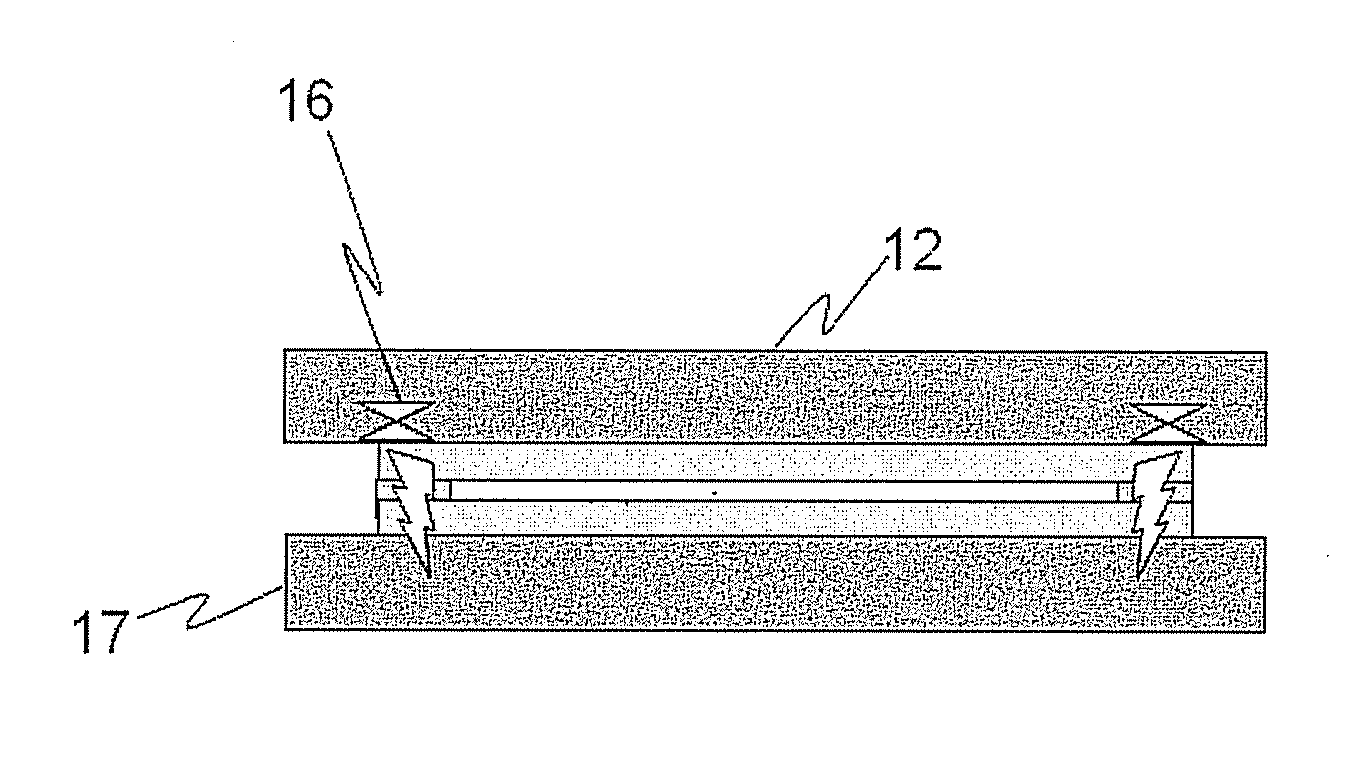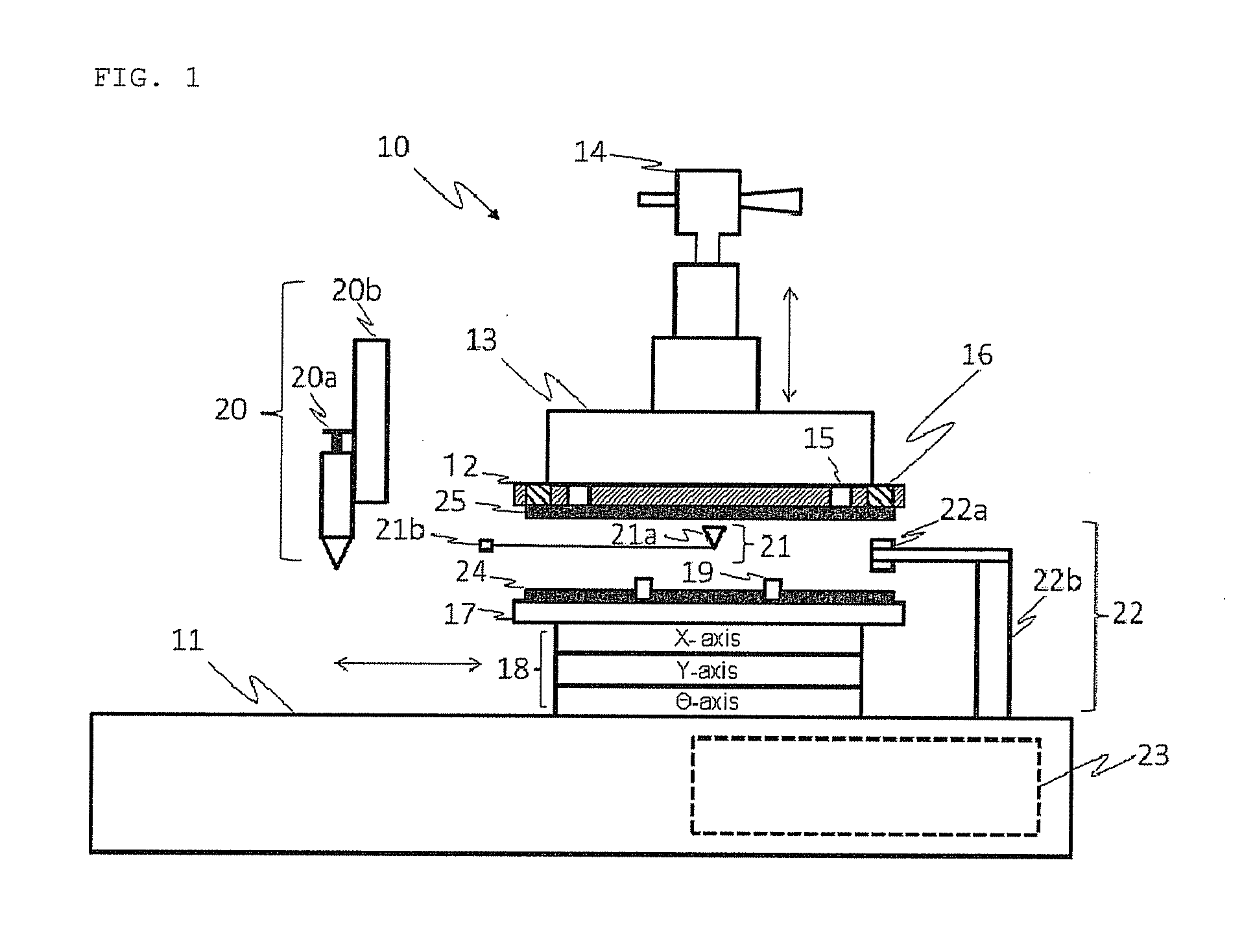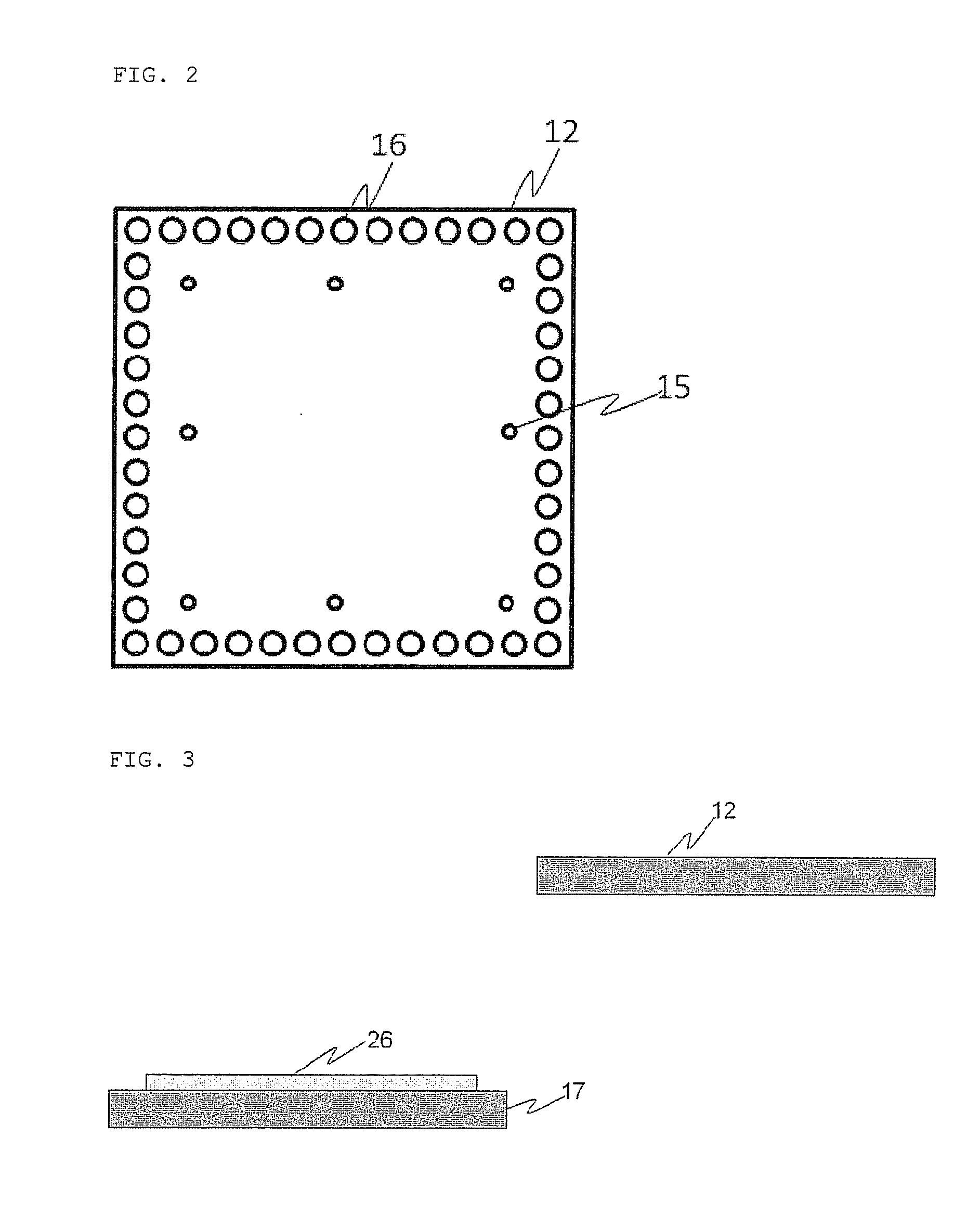Method of manufacturing translucent rigid substrate laminate
a technology of rigid substrate and manufacturing method, which is applied in the direction of manufacturing tools, wood veneer joining, synthetic resin layered products, etc., can solve the problems of difficult to obtain high positional precision in the method, difficult to obtain high thickness precision according to the procedure, and unsuitable for high precision alignment. achieve high production efficiency and high positional precision
- Summary
- Abstract
- Description
- Claims
- Application Information
AI Technical Summary
Benefits of technology
Problems solved by technology
Method used
Image
Examples
examples
Inventive Example
1. Preparation of the Fixing Agent
[0130]The fixing agent was prepared by mixing the following components (A) to (D). Two kinds of fixing agents were prepared.
(Fixing Agent 1)
[0131](A) As the polyfunctional (meth)acrylates, 20 parts by mass of “UV-3000B” manufactured by The Nippon Synthetic Chemical Industry Co., Ltd. (urethaneacrylate, hereinafter abbreviated as “UV-3000B”) and 15 parts by mass of dicyclopentany) diacrylate (“KAYARAD R-684” manufactured by Nippon Kayaku Co., Ltd., hereinafter abbreviated as “R-684”),
[0132](B) as the monofunctional (meth)acrylates, 40 parts by mass of 2-(1,2-cyclohexacarboxyimide)ethyl acrylate (“ARONIX M-140” manufactured by TOAGOSEI CO., LTD., hereinafter abbreviated as “M-140”) and 25 parts by mass of phenol 2 mol ethylene oxide-modified acrylate (“ARONIX K8-101A” manufactured by TOAGOSEI CO., LTD.),
[0133](C) as the photopolymerization initiator, 5 parts by mass of BDK: benzyldimethylketal (“IRGACURE651” manufactured by BASF Co.,...
PUM
| Property | Measurement | Unit |
|---|---|---|
| thickness | aaaaa | aaaaa |
| area | aaaaa | aaaaa |
| mass ratio | aaaaa | aaaaa |
Abstract
Description
Claims
Application Information
 Login to View More
Login to View More - R&D
- Intellectual Property
- Life Sciences
- Materials
- Tech Scout
- Unparalleled Data Quality
- Higher Quality Content
- 60% Fewer Hallucinations
Browse by: Latest US Patents, China's latest patents, Technical Efficacy Thesaurus, Application Domain, Technology Topic, Popular Technical Reports.
© 2025 PatSnap. All rights reserved.Legal|Privacy policy|Modern Slavery Act Transparency Statement|Sitemap|About US| Contact US: help@patsnap.com



